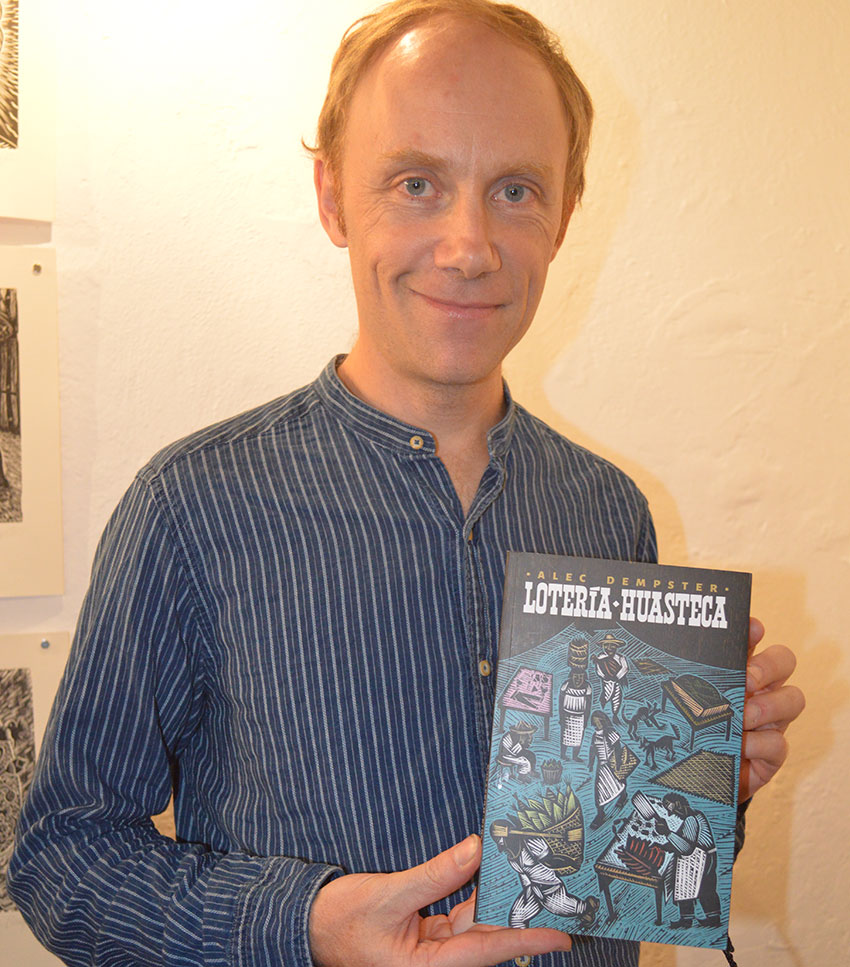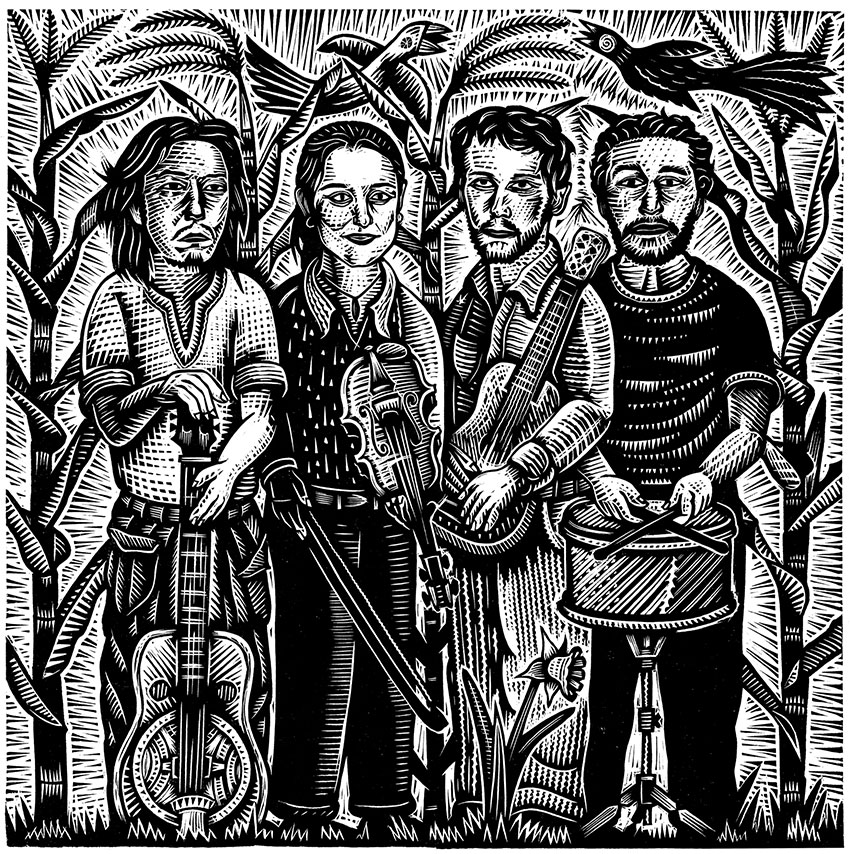It might have been the gods that ordained musician and artist Alec Dempster to become an ambassador of Mexican culture, particularly of its son music, to the outside world.
In his book Huasteca Lotería, Dempster introduces himself by saying that in 1971 his pregnant mother climbed the Pyramid of the Sun in Teotihuacán, and the next day he was born.
Dempster comes from a family of artists. Despite yielding to pressure to take up a “proper” career, Dempster’s father never gave up on music and several generations are painters.
The family was in Mexico due to his British father’s career, and lived here until Alec Dempster was 5. Then they moved to Canada, in part because his father hoped to have luck being a musician there.
The rest of Dempster’s formative years were spent in Canada, surrounded by art and music. But Mexico never disappeared for him, as he had mementos and photos as well as his own vague memories. He began visiting the country during high school, visits made all the easier since this godfather is Mexican artist Carlos Pellicer López, nephew of the famous Mexican poet Carlos Pellicer Cámara.
Dempster began his college years studying music at Concordia University, but transferred to York because he wanted to study art as well. He graduated with a degree in fine arts, specializing in printmaking.
It was an interesting choice because such work is not highly valued in Canada, but it is in Mexico.
Not surprisingly, Dempster went to Mexico to live, at first in a house in Tepotzlán, Morelos, owned by his godfather. Here he met musicians that specialized in the son jarocho music of Veracruz.
This became his musical destiny.
Son is a folk music style most prevalent in eastern Mexico – Veracruz and parts of Hidalgo, Puebla, Tamaulipas, Querétaro and San Luis Potosí. The dominant styles are son jarocho (central and southern Veracruz) and son huasteco (northern Veracruz and the other states).
They have their roots in the 17th century, blending Spanish, indigenous and even African musical styles, and are distinguished by their reliance on stringed instruments — no wind, brass or drums. Events with this music are often accompanied by fandango and similar dances.

Dempster traveled to Santiago Tuxtla, arriving in time for the annual son jarocho festival. He says experiencing son played in context had a great impact on him, seeing musicians and dancers coming in from all over town and performing. Most son musicians are not full-time professionals but rather farmers and laborers.
Later, he moved to Santiago Tuxtla and became involved with the musical community there as an artist, creating graphic images that are still widely used. He even published a lotería (like bingo) game with a son jarocho theme. He also learned how to play the music.
Dempster calls his first 15 years in Mexico a period of intense ethnographic research. For 10 of those years, he did field recordings in the town square of Santiago Tuxtla and other locations to create a set of six CDs. He interviewed a series of musicians from 2000-2005 and created 30 portraits.
In 2000, he moved to Xalapa in the north of Veracruz, working with son jarocho musicians living there. Xalapa also put Dempster in touch with Huasteca culture and its style of son music.
He moved to Canada in 2009, but it was not easy. Like many foreign artists who have spent significant time in Mexico, the constant need to make money to live on was draining. He could, however, continue to pursue son music there.
He started a band called Café con Pan, the only son jarocho group in Toronto, perhaps even in Canada. He became a promoter, bringing Mexican musicians to Canada, establishing himself as an export in the field there. His work resulted in a Canadian grant in 2014 to study son huasteca in Veracruz.

Dempster returned to Mexico to live in 2016, and currently works in Mexico City where he makes his living as an illustrator and designer for books, CDs and other materials. In 2019, he published a second lotería game, this time based on Huasteca culture.
He is still an important professional son musician, proficient in both the jarocho and huasteca styles. He plays in Canada, the United States and Mexico, especially at traditional music festivals. He can play all the son jarocho instruments, as well as the jarana huasteca, a type of guitar).
Although he is a Mexican citizen by birth, he is not what people think of when they hear his music and see (most of) his artwork. He is white (not that unusual in central Mexico) meaning that the other musicians generally call him güero (light-skinned) instead of his name.
Perhaps what really makes him stand apart is the fact that he speaks Spanish with an Anglo accent. Some Mexicans have had trouble accepting him and what he does because of it, dismissing him as a mere enthusiast. Fortunately, the quality of his work overcomes most doubts.
Despite the difficulties, Dempster has had great success in building bridges and directing attention to this relatively unknown cultural phenomenon. He has published books about Mexico and son music in Canada and Mexico, and his story has been covered in the media of both countries as well as in the United States.
His unique background allows him to be a kind of “cultural translator,” taking something unheard of and making it understandable. He believes it is important to promote under-appreciated art forms to a wider audience to work against monoculturalism.
Dempster’s most recent effort has been a collaboration with the film Fandango at the Wall, a documentary by Grammy award winners Arturo O’Farrill and Kabir Sehgal which will be released soon.
Much of Dempster’s work can be seen here.
Leigh Thelmadatter’s culture blog appears weekly on Mexico News Daily.
